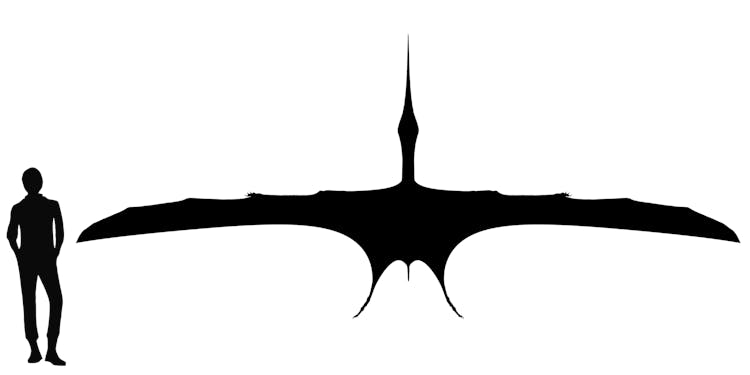


The most iconic of all pterosaurs and the first image that pops into our heads on hearing the very word, Pteranodon once held a place as the largest flying animal of all, That was, until it was eclipsed by the giant azhdarchids and the massive ornithocheirid Tropeognathus.
However, with the largest males having a wingspan close to 7 meters, it still dwarfs today’s largest birds by a massive margin. Pteranodon was discovered during the early days of paleontology by legendary fossil hunter Othniel Charles Marsh, one of the men responsible for uncovering much of North America’s prehistoric past.
The type, and only species currently regarded as Pteranodon, is P. longiceps, named by Marsh in 1876.
It is the most common Niobrara pterosaur, and it is also present in the later Pierre Shale of South Dakota. Earlier it was thought that an animal with a differently shaped crest, P. sternbergi named in 1925, was part of the genus as well. However more recently it was reclassified as Geosternbergia.
Even more recently in 2010, the genus was split again, with a genus called Dawndraco being assigned. These splits are however, still doubted, with pterosaur worker Mark Witton having disputed this claim.
While Pteranodon itself appears as a motif in popular culture, there’s a lot wrong with classic depictions. For one, the genus name means, “toothless wing” and most depictions have a full set of teeth in their jaws. Another common motif is picturing them perching on branches and rocks with their wings unfurled, while in reality they would have used their hands for walking.
Also, no pterosaur had eagle-like talons for gripping prey, and Pteranodon especially did not. Its feet were small and adapted for walking, but time and again, it is seen snatching humans and other prey off the ground in movies, comic books and on television.
A long tail was not a Pteranodon feature either.
These bizarre popular images conjure up a general ‘pterodactyl’, a monstrous mash of most pterosaur and eagle features in a vaguely Pteranodon-like body. One might say that the mass media has had a long history of giving pterosaurs – and Pteranodon especially – a big middle finger.
In retrospect however, the 2006 CGI movie Dinosaur by Disney, which was reviled for its talking prehistoric animals, actually portrayed it as a fishing, seemingly migratory animal picking prey just off the water’s surface.
As for the real animal though, we know that it had somewhat of an overbite thanks to a shorter but thicker lower jaw.
Also, Pteranodon crests were only present in the males, and these varied wildly based on the individual. These were obviously used to display an animal’s strength and age to rivals and mates.
Earlier theories included the use of the crest as a counterbalance for the beak, but very soon the even larger azhdarchids proved that this was clearly not the case, because they managed to fly so well and achieve global distribution – Quetzalcoatlus in North America, Arambourgiania in Israel – without anything massive stuck to the back of their heads.
Also female Pteranodons were half the size of males and had just a small nubbin for a crest. A balancing organ would have been far more universal and conservative in form. This suggests a harem-based reproductive system, with massive males competing with each other for numerous small females.
The young themselves were most likely precocious and it is fair to assume that they followed a different lifestyle to their parents, even though no Pteranodon hatchlings have actually been discovered.
We do know, however, that like all pterodactyloid pterosaurs, growth was exceptional, with young reaching near-adult sizes in under an year. They also showed determinate growth, terminating at certain dimensions just like a similarly warm-blooded dinosaur.
These animals ranged all over the Niobrara Sea via dynamic soaring capabilities and were actually more adept around water than previously assumed. It is thought that not only could they perform a launch off the water’s surface but also dive into the sea like a gannet, wings folded up next to the body.
